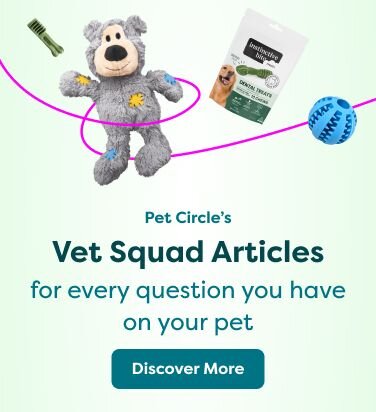Last Updated: 04/09/2025
Beginners Guide To Bird Care
Birds are intelligent, long-term companions. This complete beginner's guide by a vet covers the essentials of housing, nutrition, mental enrichment, and preventative health to ensure your feathered friend doesn't just survive, but thrives with you for years to come.
Author: Dr Carla Paszkowski BVSc (Hons)
Reading Time: 19 minutes - medium read
Parrot species, also known as psittacines, make wonderful and intelligent pets. From cockatiels to ringnecks, parrots are clever and incredibly full of personality.
But caring for a bird is not as easy as it might seem. Diligent care needs to be taken with their husbandry, hygiene and diet to ensure they don't become ill, malnourished, or depressed. Incorrect housing and husbandry practices are a common cause of health problems in birds. Before you rush out and buy a feathered friend, it's important to have a basic understanding of their unique care requirements.
To help get you started, we've set out a complete guide for beginner bird parents. This guide applies to all species of parrots including Budgies (also known as parakeets), Cockatiels, Ringnecks, Lovebirds, Conures, African Greys, and Macaws.
Personality and Psychology of Birds
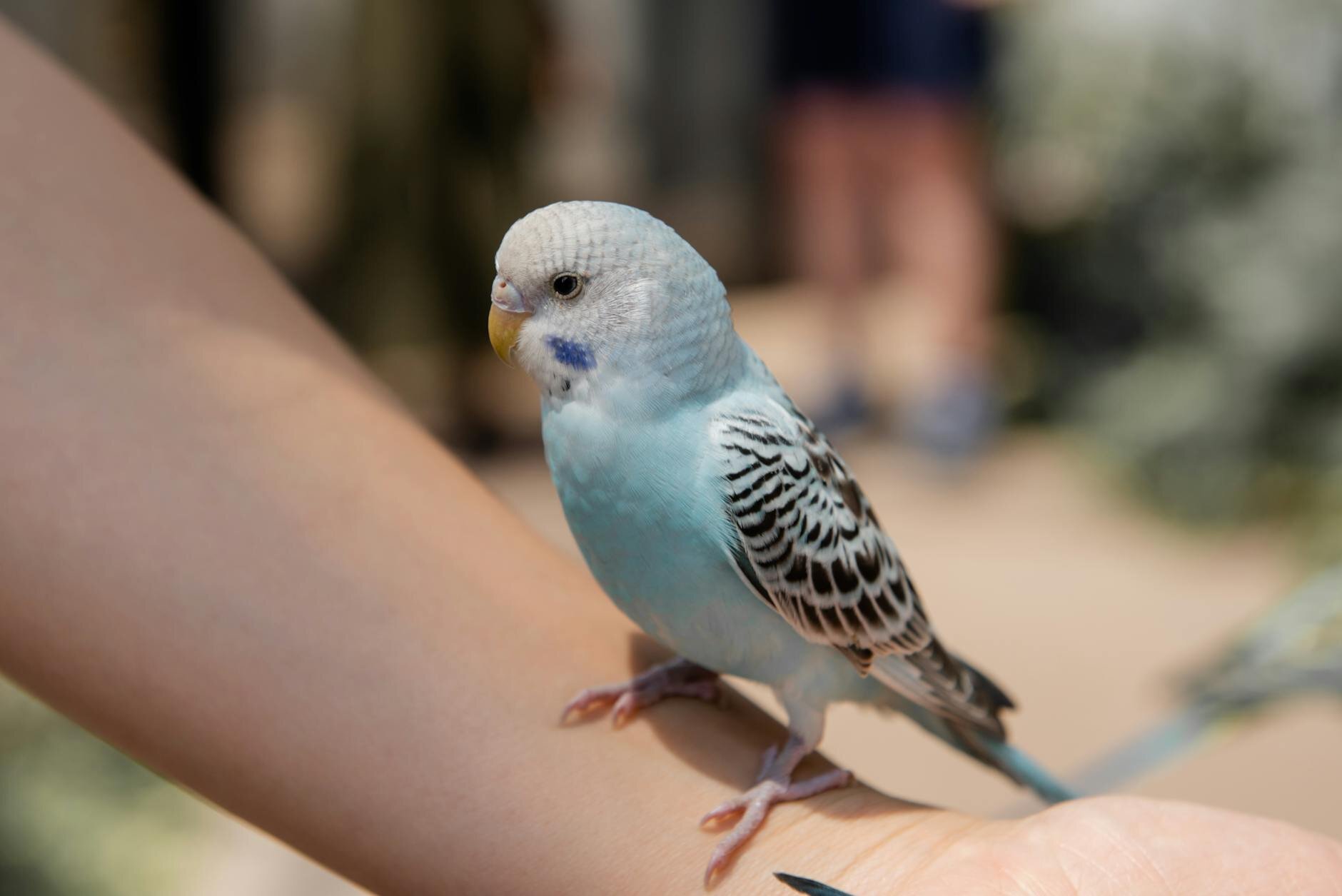
Parrot species are highly social. From budgies to macaws, these birds always require company and typically form 'mate' pairs. In the wild, they often form flocks made up of numerous pairs.
Does this mean you should always buy parrots in pairs? Well, not necessarily. Parrots are unique because they have the ability to transfer this instinct and form a 'mate' bond with a human. However, this ability is influenced by their rearing phase; where hand-reared birds are more likely to bond with humans than those reared by birds.
In the absence of another bird, your bird will probably form a bond with one human in particular. Birds aren't bird brained, in fact they are almost like a five year old child! They may show fierce loyalty to this one human - if you bond with your bird but do not pay them enough attention, they can become depressed, forlorn, and neglected. Therefore, if you work away from home, or can't commit to showing your bird hours of daily devotion, it might be kindest to consider a same-species 'friend' to keep your bird paired and happy.
How Long Do Birds Live?
Before buying a new feathered friend, it's important to know that birds are a long term commitment. Many people are surprised to learn the estimated lifespan of many popular species. You should of course only adopt a bird if you are prepared to keep it for life.
Housing
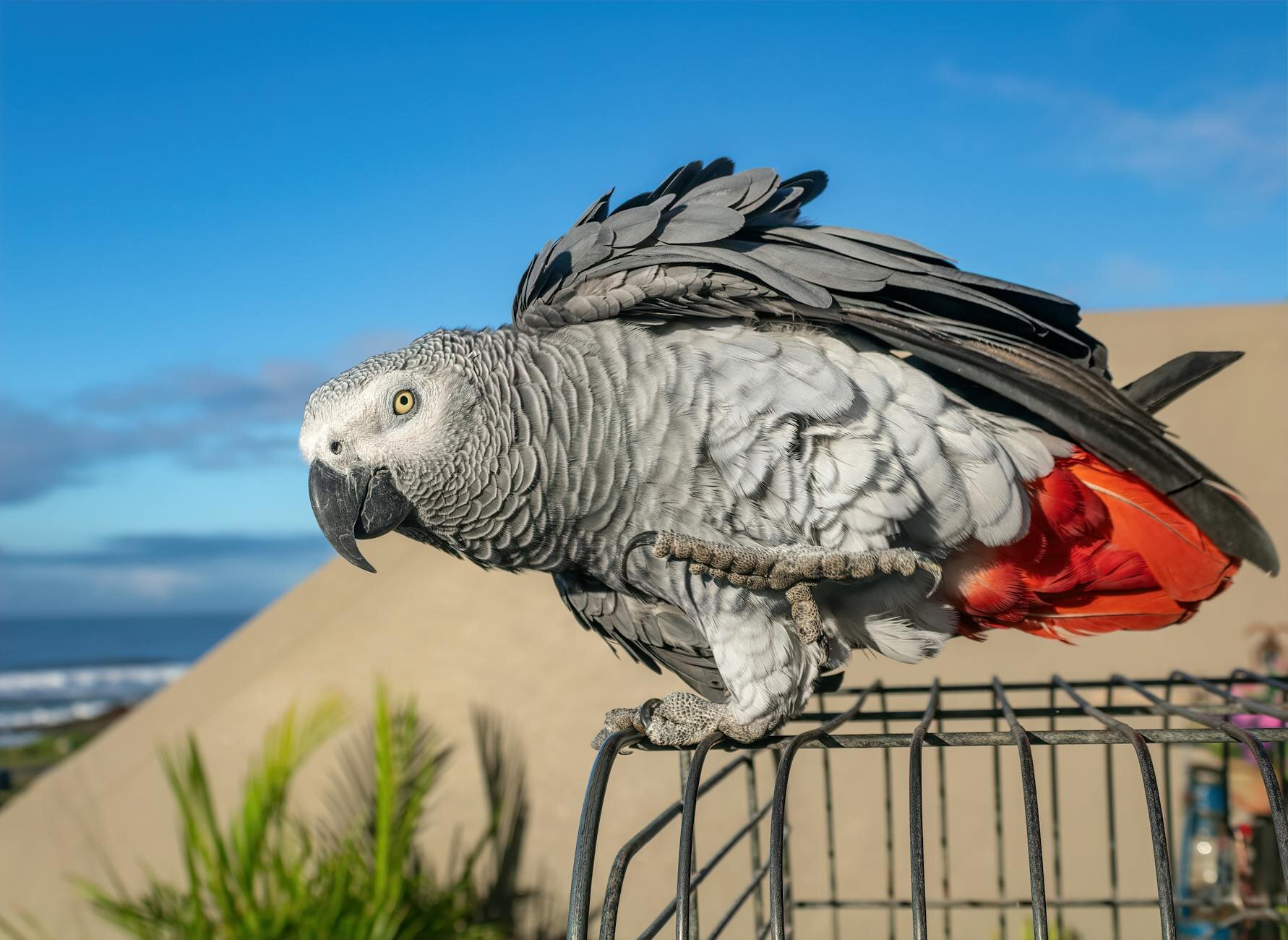
Do birds actually need to be caged at all times?
No, they most certainly do not. However, it's still important to provide a cage or enclosure as a 'home base' for your bird. Instead of viewing this cage as a means of constant restraint, think of their cage as their 'house' from which they are free to leave from time to time if they are tame enough to do so. For untamed, aviary birds, creating a large enclosure in which they can forage, fly and safely retreat to is a must.
Some people like to have their bird free to roam at all times, as this encourages bonding with their human. Take care as kitchens and fans are a major hazard for your free ranging birds. Bird proof your home by ensuring that you keep your bird away from kitchen stoves and minimise the use of teflon in your home (as the fumes are toxic). Make sure moving objects such as fans are switched off, or blocked off from your bird to access. Electrical cords will need to be hidden, or protected, as birds will chew on them whilst exploring. Always free range your bird under close supervision.
Your bird will likely return to their cage if they feel threatened or frightened, and also when they want to eat, drink, or bathe themselves. Many tamed birds will follow their human around, choosing to perch on their human's shoulder and head. And don't worry - you can toilet train most birds!
However other people might choose to allow their bird out for a few hours during the day, and keep them in their cage at night. Because birds naturally seek shelter for sleeping, this can work well also.
Don't forget to have a handy travel cage to use to bring your bird to the vet! The same principles apply, ensure the wires are not too large for your bird to escape, and make sure there is a large enough opening to easily grab your bird from.
How to Choose the Best Cage For Your Bird
As a general rule, bigger is better when it comes to choosing a cage for your bird. You can never have too large a cage, but you can certainly have too small a cage. Look for a cage which is big enough to allow your bird species to stretch their wings fully and fly for 3-4 wingbeats. Cages should be long and wide.
It's also important to ensure that the cage bars are spaced appropriately. The gaps between the bars need to be narrow enough so that your bird can't get out and predators can't get in! Snakes and other wild birds are a particular risk in many parts of Australia, and can unfortunately attack through surprisingly small spaces.
Bird cages should be solid and sturdy, and made of bird safe material. Cages made of stainless steel, which are unlikely to chip, are non toxic and easy to clean are ideal, however these can be expensive. Powder coated steel is a more readily available option, as are powder coated galvanized wire cages. However keep in mind that if there is any rusting or chipping of the outer layer there is an increased risk of heavy metal consumption. Replace your cages if you notice rusting or peeling of the outer layer to minimise the risk of heavy metal toxicity.
Where To Place Your Bird's Cage
Birds are very sensitive to smoke and can even succumb to toxicoses from teflon vapours (which are produced from some non-stick pans). Therefore, it is ideal to place your bird's cage away from the kitchen and in a well-ventillated area.
With regards to sunlight, your bird will benefit from having some exposure to the sun each day to obtain adequate Vitamin D and maintain strong bones. If you're unable to let your bird out of their cage during daylight hours you may wish to place your bird's cage near an open window so they can get some sunlight - provided there is adequate shade to escape to when they get too hot.
And finally, remember that your bird will probably make quite a mess when they rummage through their food each day. Make sure you place your bird's cage in a position where regular floor clean ups are easy and practical.
What To Put In Your Bird's Cage
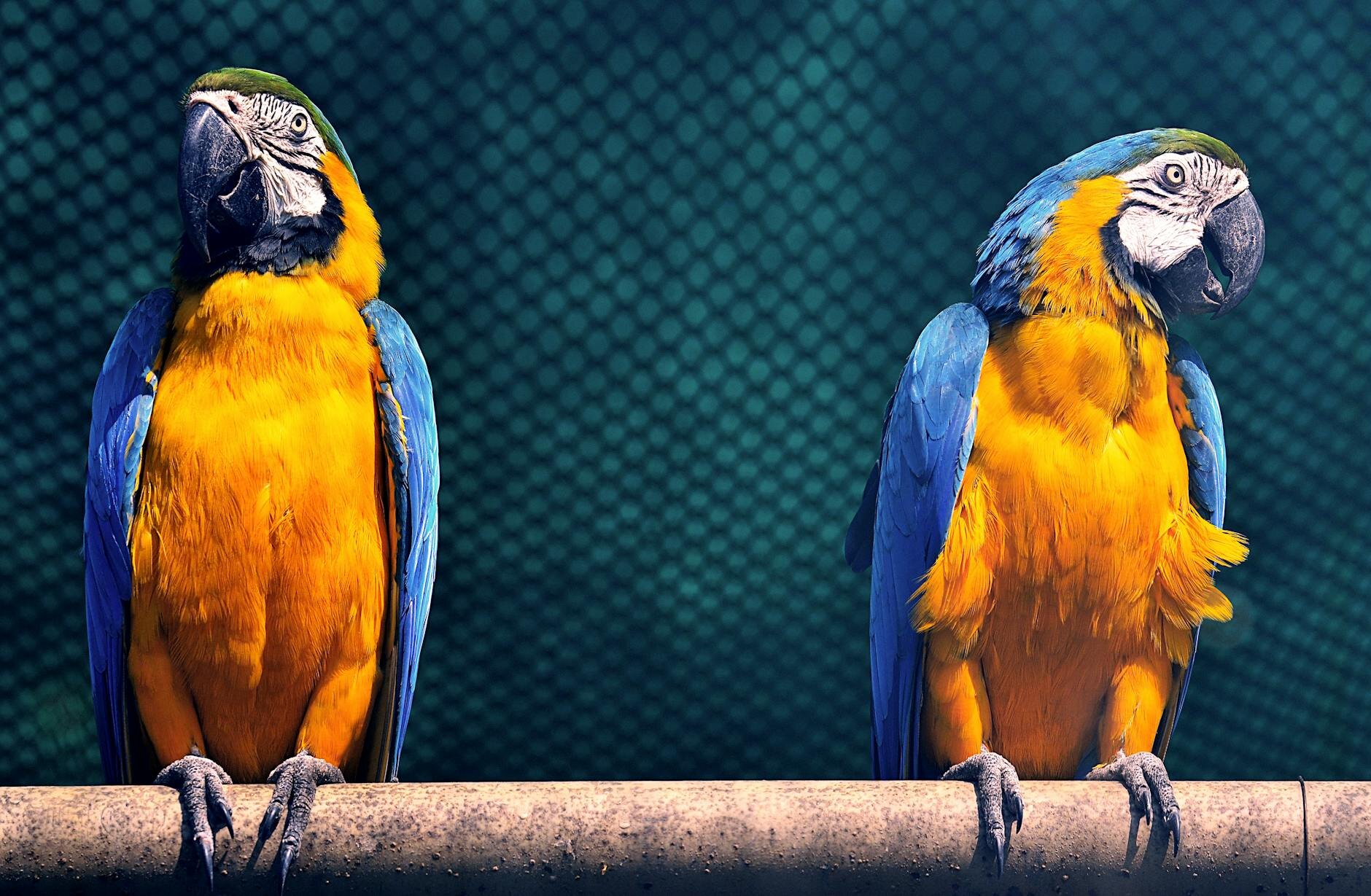
Setting up your bird cage can be a whole lot of fun. You can customise it to be as creative or as interesting as you like. However, there are a few essentials that you'll need for your bird's cage to get started. These include:
Recommended products
Learn more in our article on the Best Toys for Birds.
Nutrition
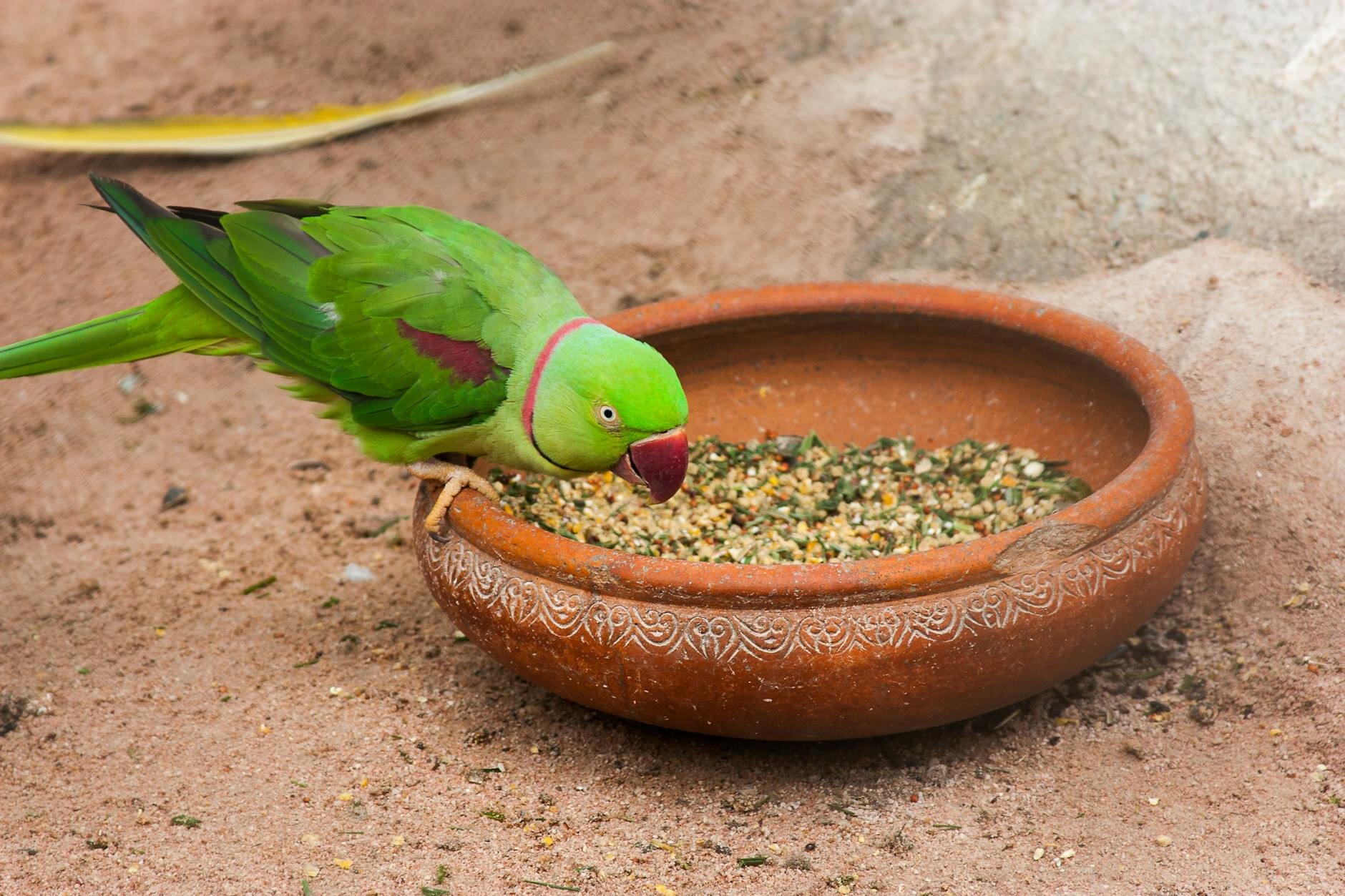
Note: This section applies to most parrot species, however some species such as the Lorikeet require a nectar-based diet. Always research your bird's individual species dietary requirements on our Discover Page for Birds, or if you aren't sure, you can Ask a Pet Circle Vet.
Nutrition is one of the most important, and sadly one of the most misunderstood, facets of bird care. Many people believe that psittacine birds should be fed a seed-only diet, and unfortunately many commercial 'bird food' producers still sell seed mix advertised as a 'complete diet' which only perpetuates the belief.
While feeding a seed-based diet is convenient and relatively cheap, birds will selectively pick out the parts of the food they like, including particular seeds which can lead to an array of health problems - often vitamin and mineral deficiencies as well as obesity and liver disease and ultimately a shortened lifespan. Seed diets are generally either carbohydrates (e.g. millet) and/or fat (e.g. sunflower seeds) and lack a number of vitamins, minerals and protein.
Seeds can be used to make up part of a balanced bird diet, but should not be the ENTIRE diet. Instead, we recommend a diet which contains a base of premium pellets. Pelleted diets are specially formulated nutritionally balanced meals. In a pelleted diet, birds are unable to preferentially select certain foods such as a favourite type of seed. They are easy to feed, provide a 'nutritionally complete' diet for a range of species, and are also more economical to feed in the long term.
For birds that are accustomed to a seed only or high seed diet, you will need to transition them slowly to pellets. Likewise when introducing new foods, it needs to be done gradually, birds are creatures of habit but also notoriously stubborn when it comes to new foods.
Check out the guidelines from Why Should Birds Eat Pellets? for more information.
What is the ideal bird diet?
Which Fruit and Vegetables Are Safe For Birds?
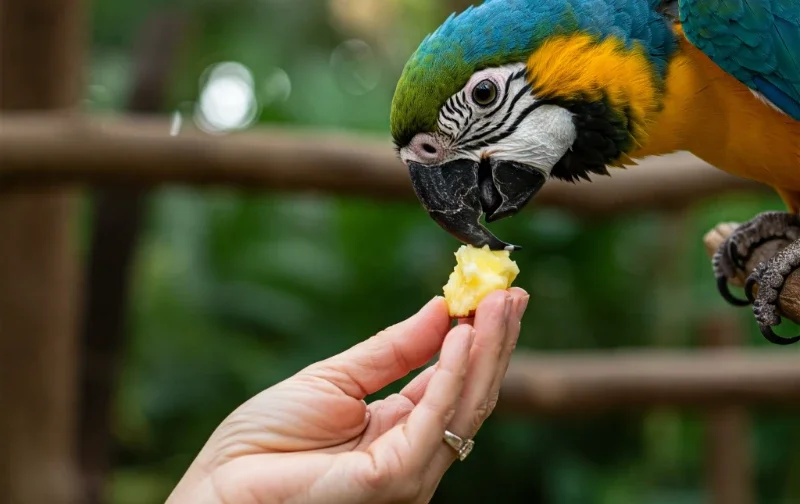
Safe fruits and vegetables for birds
- Zucchini
- Tomatoes
- Kiwi
- Strawberries
- Blueberries
- Grapes
- Apple (small amounts)
- Melons
- Stone fruits (remove stone first)
- Corn
- Broccoli
- Squash
- Sweet potato
- Pumpkin
- Carrot
- Beans
- Peas
- Capsicum
Learn How to Sprout Seed for Your Bird to provide variety and enrichment.
Fruits and vegetables to avoid include: Celery stalks, iceberg lettuce, avocado, onion, garlic, rhubarb, chocolate.
Calcium Supplementation
Many bird species can benefit from calcium supplementation, especially if they are currently breeding or laying eggs. Calcium can help support your bird as they lay down egg shell. Calcium supplementation can be given in the form of cuttlebones, shell grit, or a calcium perch. Cuttlebones and calcium perches also help keep your bird's beak trim and filed, reducing painful overgrowth. Calcium can also be given as a powder or liquid supplement.
Parasite Prevention
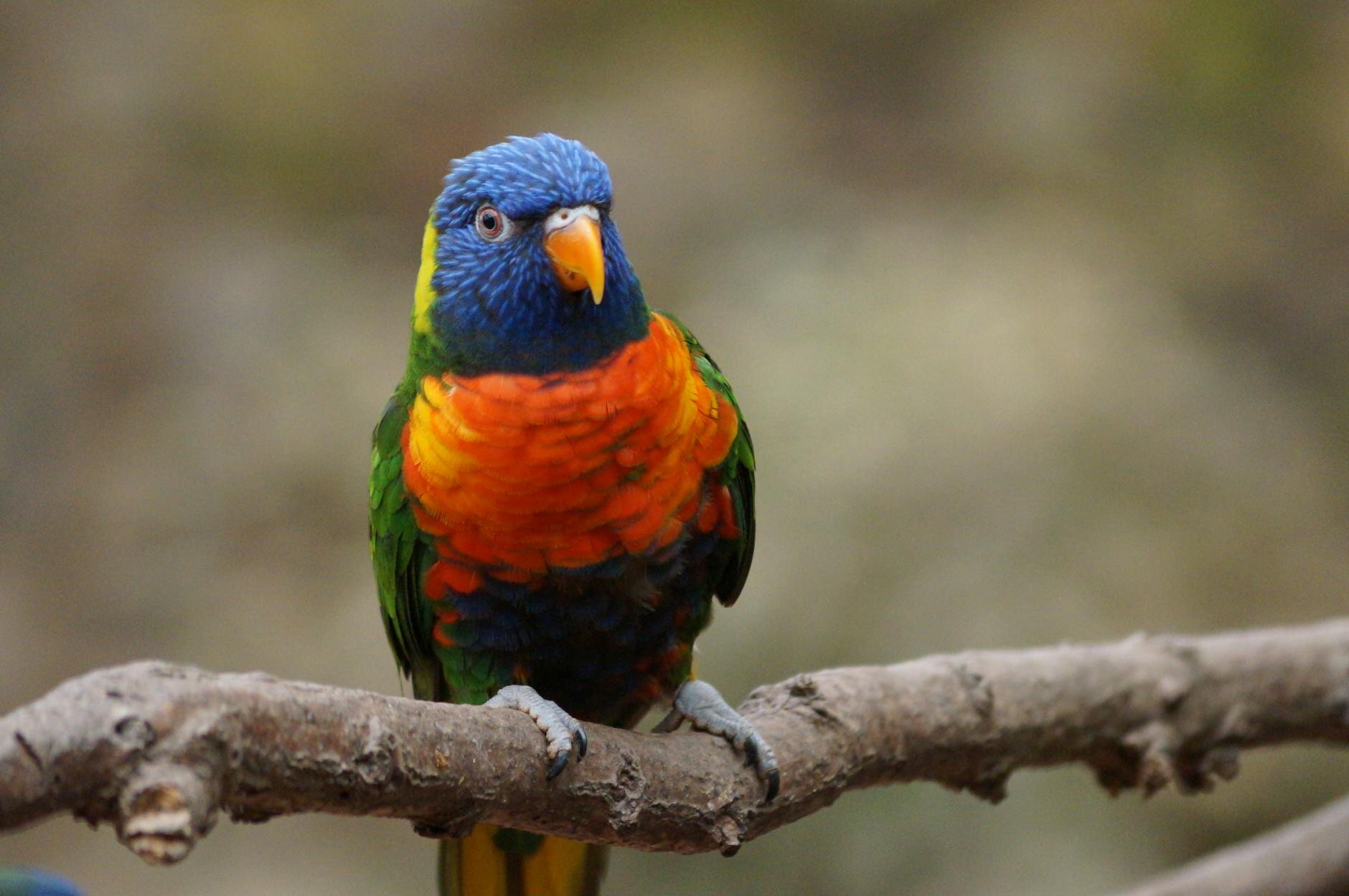
Both external and internal parasites can pose a risk to pet birds, even if housed entirely indoors. For this reason, it's always a good idea to treat your bird for both worms and external parasites as soon as you bring them home from the breeder or pet store, and quarantine them from your other birds for at least two days. If your birds are in contact with wildlife or have any access to the outdoors, it's worth spraying them for mites once every 6-8 weeks, and worming them every 3 months.
External Parasites
Mites and lice are the two most common external parasites that affect pet birds. Your bird may become infected from the aviary you purchased your bird from, or from wildlife that passes near your house. Both bird mites and lice are not transferable to or from humans.
Mites
Mites are microscopic creatures that cannot be seen with the naked eye. They cause an itchy, scaly, crusty look to the face or feet of pet birds and are particularly common in budgies and cockatiels. There are other less common mites that can affect the air sacs and cause breathing difficulties.
Lice
Lice, unlike mites, are often visible to the naked eye. They are more common in chickens but can affect parrot species as well. They tend to cause itchiness and can lead to feather loss and skin conditions.
If you suspect your bird might have mites or lice, always consult with your veterinarian to determine an appropriate and effective treatment.
In terms of prevention, it's important to treat your pet bird for external parasites with a mite and lice spray when you bring them home from the breeder, and quarantine them from your other birds for two days before introduction. If your birds are in contact with wildlife or have access to the outdoors, it is worth spraying them once every 6-8 weeks to keep them bug-free.
Always make sure you check with your vet with regards to dose and frequency, so as not to overdose your bird.
Internal Parasites
There are many internal parasites that can affect birds, including roundworms (nematodes), tapeworms (cestodes), flukes, and protozoa including coccidia, cryptosporidia and giardia. Thankfully these parasites are rare in pet birds who were purchased from a reputable breeder and have been kept mostly indoors.
Pet birds don't generally require regular worming every three months like dogs and cats, as birds don't get outdoors as much as their furry friends. However, you should consider worming your bird if they have access to the outdoors, as well as any newly adopted birds before introducing them to your current aviary.
Wing Clipping
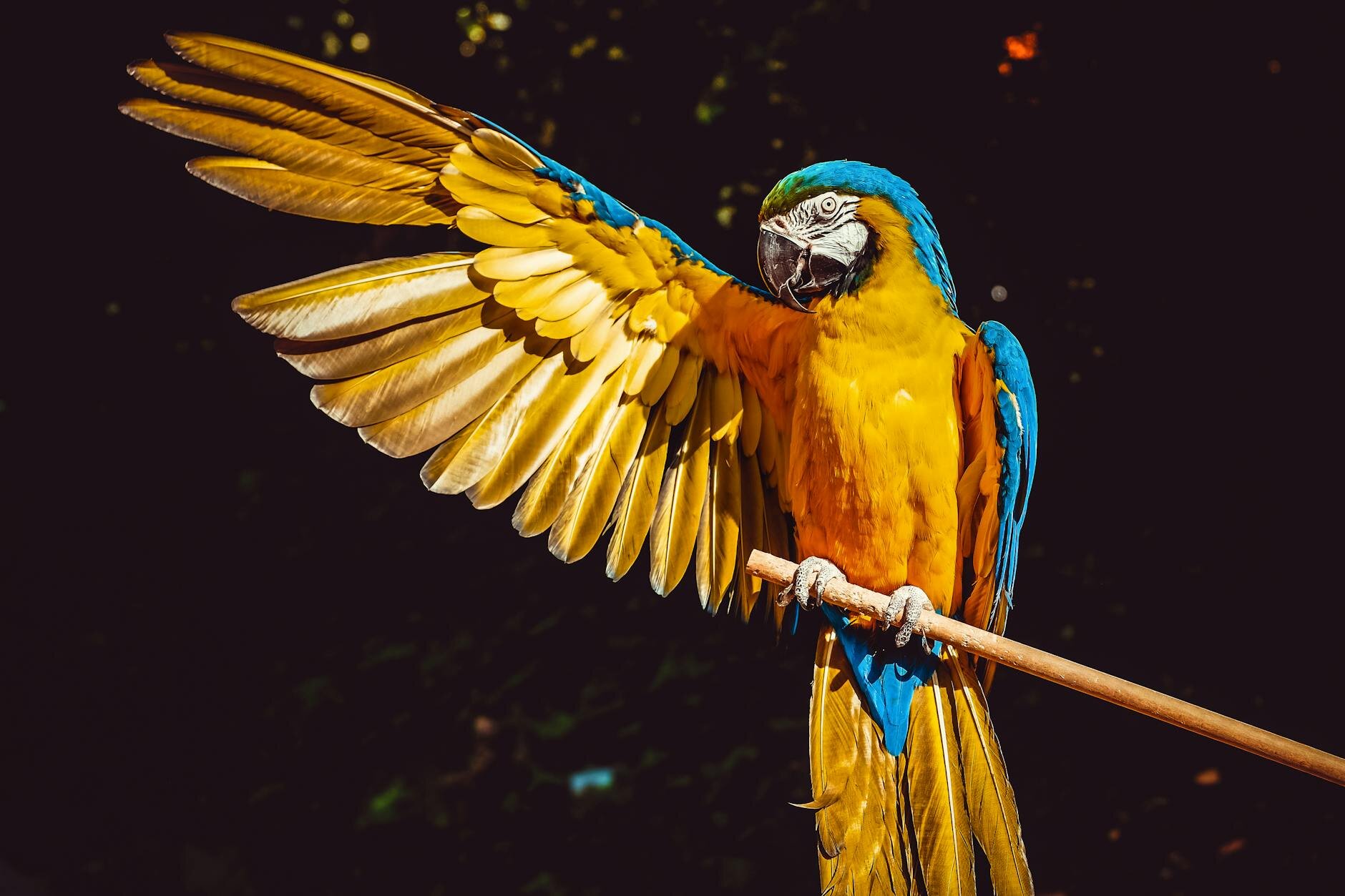
Wing clipping involves the trimming of flight feathers to limit a bird's ability to fly. Whilst wing clipping can be a reassurance in preventing escapes, it is a practice that is now strongly discouraged by most vets as unfortunately we see a wide range of poor physical and mental health outcomes in birds with clipped wings, including injuries from heavy falls, feather issues (such as damage to the wing edge and emerging feathers from feathers cut too short) and feather picking. Some alternatives to wing clipping include having a flight aviary or a safe flight space within the home and teaching your bird recall skills.
It's important to note no wing clip will guarantee that a bird will not fly away. If a wing clip must be performed, there a few crucial tips:
- wing clips should only be performed by experienced Avian veterinarians
- wing clips should only be considered once a bird has learnt to fly and land safely
- clipping both wings is recommended to ensure that a bird is balanced and can land safely
- only the primary flight feathers (the longer, stiffer feathers at the end of the wings) should be clipped
- avoidance of cutting blood feathers is crucial, as well as leaving enough of shaft of the clipped primary feathers around any blood feathers, to protect them
Nail Trimming
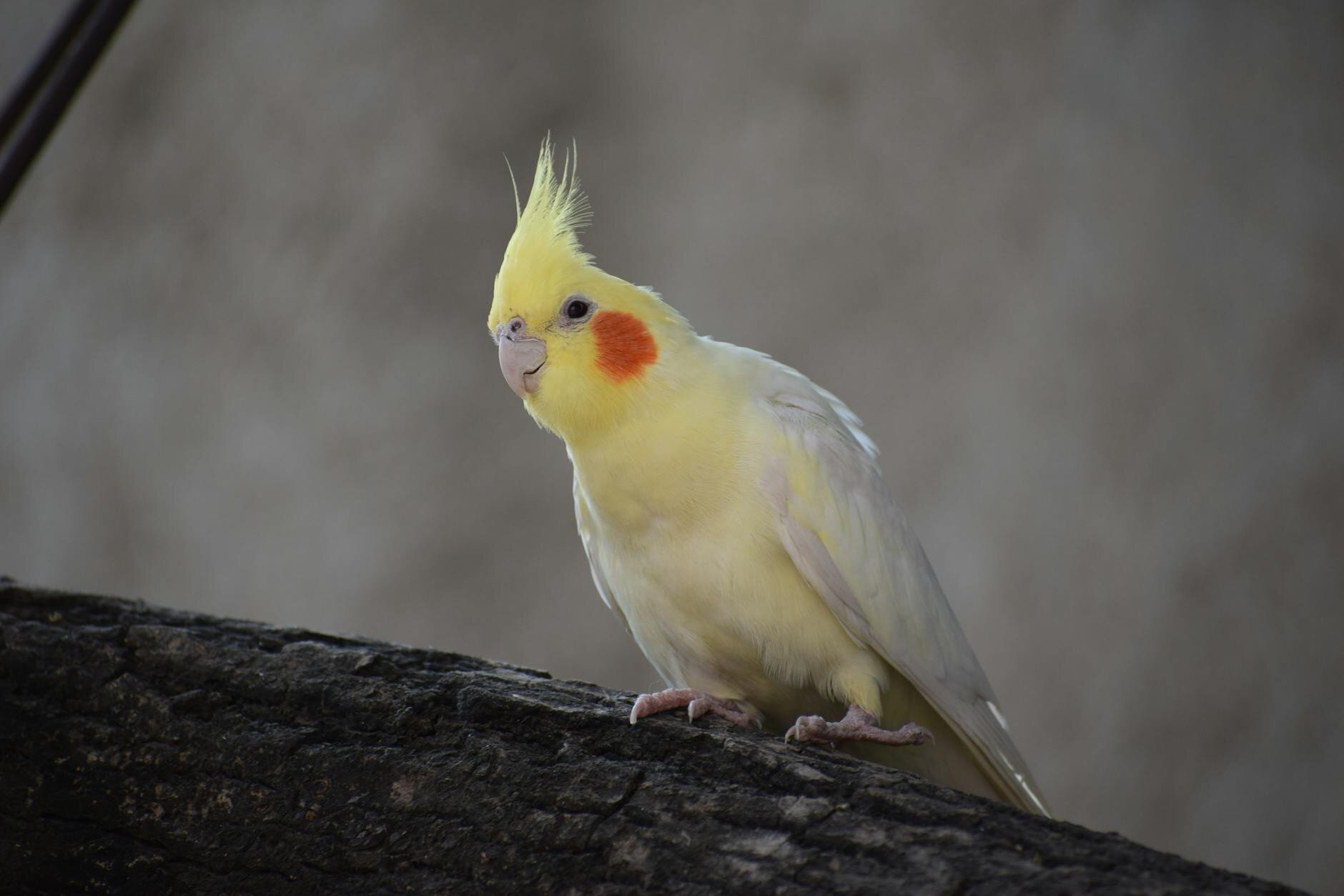
Many bird parents choose to trim their bird's nails, as it helps make their little claws less sharp - which makes shoulder-perching less painful and scratchy!
However, nail trimming is often not necessary as many birds file their nails down naturally by walking, playing with toys, perching on different surfaced or perching on a rough surface, such as a calcium grit perch.
While you can learn to clip your bird's nails at home, we recommend consulting with your veterinarian to ensure you're doing it safely and correctly.
In conclusion, the key to a healthy and happy bird lies in diligent and informed care. Prioritising a balanced, pellet-based diet, providing a spacious and mentally stimulating environment, and staying on top of routine health needs are non-negotiable.
By understanding and meeting these requirements, you will be rewarded with the unique and intelligent companionship that only a well-cared-for bird can offer.
Articles recommended for you
Our vet authored guide to the benefits of feeding your dog fresh food plus tips and advice for introducing it into their regular menu.
See our guide to protecting your pet from parasites from our vet team.
Thinking of getting a fish? Check out our guide for setting up a tank and home care tips!
Looking to understand horse feeds better? This comprehensive guide covers feeding recommendations for horses of all ages and disciplines.
Does your pet suffer from anxiety? Check out our Vet-guide for treatment options to help your pet.
History
Our experts continually monitor the health and wellness space and we update our articles when new information becomes available.
Thu 4 Sep 2025
Edited by Dr Gillian Hill BVSc (Hons)Dr Carla Paszkowski BVSc (Hons)
Veterinarian
Dr. Carla graduated from the University of Queensland in 2013 with a Bachelor of Veterinary Science and worked for a number of years in small animal clinics across South East Queensland. While Carla enjoys most facets of clinical veterinary work, she holds a special passion for feline medicine, pocket pets, and nutrition.

